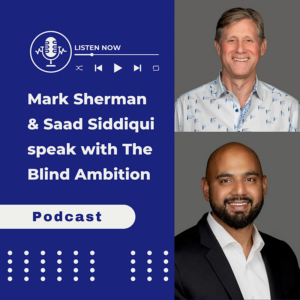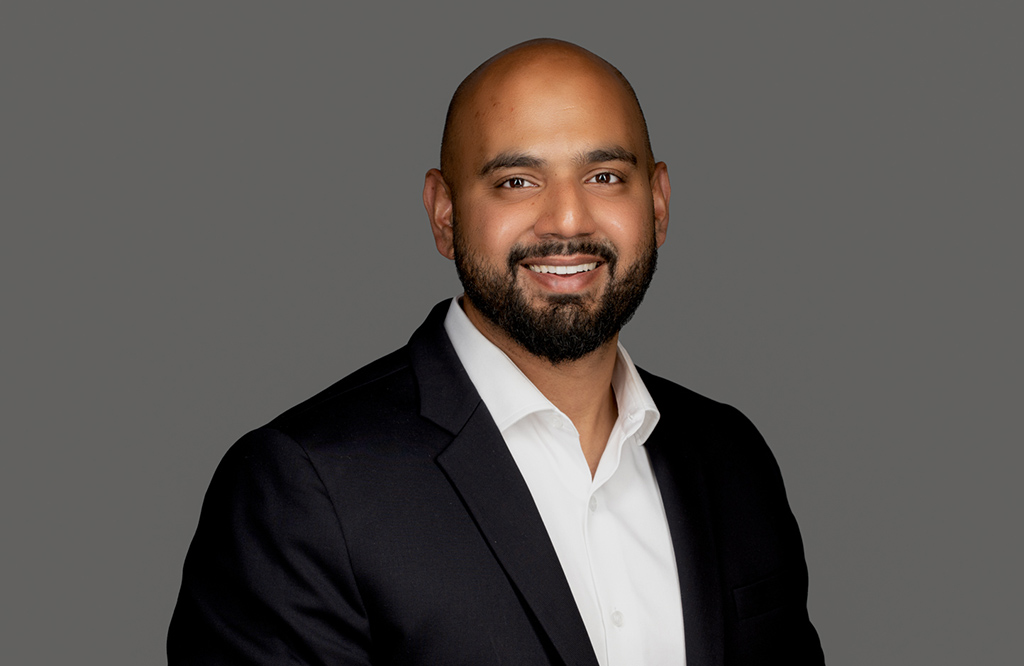Mark and Saad take us through how venture capitalists decide what to invest in and how they find startup founders, including an inside look into some of the data science and models they use to predict success. (Hint: We all could use the advice, even if we aren’t startup executives looking for an investment!)
Rick 00:05
We have Titanium Ventures, which is the corporate venture capital arm of Australia’s largest telecommunications company by market share Titanium.
We have Saad Siddiqui, he’s a general partner at Titanium Ventures. He focuses on enterprise technology investments, especially next generation enterprise infrastructure and applications. He was previously a member of Cisco’s venture investing and acquisitions team, covering cloud, big data and virtualization.
And it’s also worked at mergers and acquisitions at RBC Capital Markets. Next we have Mark Sherman, who’s the managing director of Titanium Ventures. He got us started investing in college when he was assembling barges and working at an investment firm concurrently.
He’s responsible for some of the firm’s most well known investments, including box, cumulus, Docusign, skills and springboard.
Mark Sherman 01:50
We’re really trying to differentiate on using data science as a tool to try to discover and analyze interesting investments. And then secondly, helping those companies get usually from one to $10 million to $100 million in revenue and beyond.
We have sourced tons of companies on the data science side, and we’ve generated almost half a billion dollars of revenue for our portfolio by helping them either sell to Titanium, which is the large Australian mobile operator, or through Titanium customers, or to direct relationships that we have in the industry.
Saad Siddiqui 03:08
We’ve gone from a relatively static place in the HR world to a very dynamic place. We’ve gone through everything from COVID to where everyone ended up working remotely or hybrid to an incredible boom time where scale was everything, especially the tech side, to now a great recession.
People are optimizing for profitability over growth at all costs, which was what we’ve experienced the last decade.
A lot of my time is helping different leaders across four organizations figure out what are the tools that they need to get the maximum amount of flexibility so that they can build organizations and processes that can help them cater to their workforces.
Rick 04:52
But you’re actually going deep into the technology.
Saad Siddiqui 05:38
I actually love kind of spending more time one on one with founders and helping them think through their strategies. Always trying to figure out what are the things that would be helpful to them from a data side, or from a revenue bearing relationship side.
Mark Sherman 07:41
We’ve made 90 investments. We’ve generated revenue for 45 of those. And the way we do that is we have four people on a revenue acceleration team.
And all they do is spend their time trying to think about what relationships we have, to introduce new prospects or existing customers to some of our newer portfolio companies.
I would say 99% of venture firms, you know, can’t really generate revenue in a predictable way like we do. And so it’s really a nice, you know, differentiation in terms of how we can kind of demonstrate our per dollar value to our entrepreneurs.
There’s been a big shift in venture land from 2021 to 2022. Venture in 2021 has growth at all costs. So to your point, Jack, spending a lot of money, trying to get revenue to grow as quickly as possible.
Then when the equity markets started to sell down in 2022 and NASDAQ was down 30% and interest rates started to spike up, there was much more emphasis on profitability.
We’ve been encouraging our teams to be thoughtful and very efficient about how they grow. But it’s definitely been very much in the market in the last year that transition has really been playing out.
More of the companies in 2023 and beyond will be leaner and leaner and actually in a much better position to grow downstream.
Saad Siddiqui 11:10
As interest rates rise, the return that a startup needs to generate has to be higher. In the past, if a venture capital fund was returning 20%, great, because on the debt side, you’re getting 1% or something like that.
And as interest rates rise, the cost of capital increases. Startups are selling to companies. Those companies now have to service the debt that they have.
And as those costs increase, the budgets start shrinking, which means growth starts shrinking for startups. Their end customers aren’t going to be as experimental as they might have been in the past.
They need tools that work. They’re looking at doing a lot of different things around cost management, cost reduction, the things of that nature.
In the end, technology is a deflationary tool, so technology reduces costs.
But at the same time, buyers are becoming more scrupulous. They’re not going to just take like a marketing person’s say of this. They’re becoming more strict and stringent around things that are not delivering solid ROI.
Companies that can survive these downturns have a sense of purpose and vision and actually deliver true ROI to their customers.
One of the companies called Certain, is in the background check space, they’ve actually bought two companies in the last 12 months.
At the end of the day, we need to have the end customer in mind for all of our portfolio companies.
So for the folks that are thinking long term, try to find the best teams to be a part of. Focus on that. Go to a place where you believe in the mission that is making an impact in the world.
Mark Sherman 19:45
Our data science guys have just been playing around with some people scoring technology. Have they been at a tech platform in the glory years or for a long period of time? Those people tend to have a higher probability of being founders that actually generate nice multiple returns over time.
Saad Siddiqui 22:10
In another way, we’re looking at attributes. When you think about venture capitalists in the past, you would think the founder was enchanting, and had to give him money.
You didn’t have a lot of data in the 70s and 80s and 90s. Now you have a lot of actual data around people’s job histories. You have data around the product that they may have built on an MVP perspective, what fraction it has, etc.
We bring a little bit of science to that selection rather than having our emotional heart lead the investment decision. We cannot divorce the science side from the human judgment side.
We can augment our decision making with data and have actual conversations to prove to the team why an investment is still worth making.
Identify common traits founders have that show resilience, good judgment, and that they know how to build more than a product or company.
Mark Sherman 23:53
The other angle is just seeing how much AI is just touching all of our businesses. How can I mix that with some AI capabilities to turn it into something really powerful? From customer acquisition, so top of funnel, to actually defining their service deliveries.
Saad Siddiqui 24:43
The generative AI side has a theft function that I think every employee needs to get in front of.
My 10 year old cousin can ask chat GPT to write him a line of code that makes him a video game. You don’t need a programmer anymore.
AI is gonna touch everything. Now it’s proliferating where everyone can benefit from artificial intelligence.
All these tech companies have tens of thousands of people, not hundreds of thousands of people as they did in the past.
Rick 26:55
You’re almost describing a dystopia, right, where there might be hundreds, thousands of people out of jobs. Or does it just unlock us to do a different kind of work or more level thinking?
Saad Siddiqui 27:18
I think it’s assuming only 10 people can do that job. What if you gave that power to a 15 year old in Sub -Saharan Africa? There shouldn’t be a cap on the number of companies that are out there and how someone can make a living. Now you’re giving these tools to the entire world, not just the select few in Silicon Valley.
Rick 27:49
HR, the workplace, has not really changed, right? We’ve seen almost a decade’s worth of change in just that short amount of time.
Mark Sherman 28:07
Another angle I think we see is just companies doing more assessments before they actually hire people. And you know, it’s sort of a little bit of dating before you actually get married.
Ultimately, it’s going to be better for the individual and for the company, because people that do well on their assessments tend to stick and be longer -term employees and get promoted faster in terms of their career tracks.


